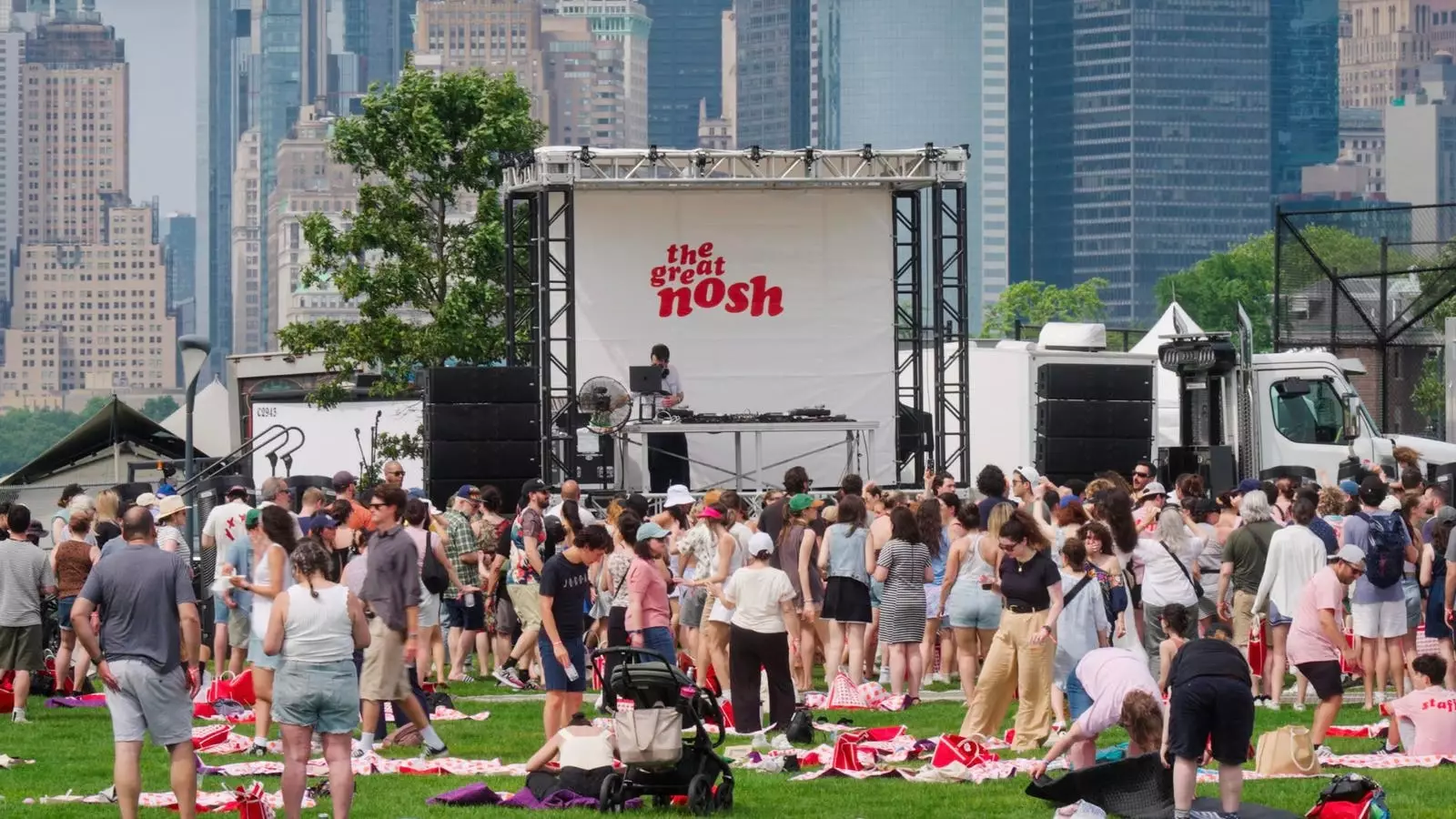Food has long served as an essential vessel for cultural expression, acting as a bridge that connects individuals to their heritage and communities. In recent years, the concept of food festivals dedicated to specific cultural cuisines has gained momentum, emphasizing more than just taste — they serve as powerful statements of identity, resilience, and unity. The inaugural Great Nosh in New York epitomizes this movement, transforming a simple picnic into a vibrant tapestry of history, innovation, and belonging. This event was not merely about eating; it was about reclaiming narratives, celebrating diversity, and fostering a sense of collective pride that transcends generations.
What sets Great Nosh apart is its deliberate effort to showcase the multifaceted nature of Jewish cuisine. Far from a monolith, Jewish food is a dynamic mosaic influenced by diasporas, migration, and regional adaptations. The event’s curated menu, featuring dishes such as schnitzel-and-chips, black and white cookie cheesecake, and adventurous collaborations like Roti Reubens, underscores this diversity. Each dish becomes a storytelling device, illustrating migrations and intercultural exchanges, and challenging stereotypes that reduce Jewish cuisine to a narrow set of foods. Instead, Great Nosh positions food as a living history, a testament to resilience amid adversity.
This celebration of culinary diversity also reflects a broader intention: to foster understanding and community. When attendees sample the kaleidoscope of flavors, they’re not just tasting food—they’re engaging in a dialogue about shared histories, migration stories, and the evolving identity of Jewish communities. It emphasizes that embracing differences can enhance communal bonds rather than fragment them. By integrating influences from Thai, Middle Eastern, Eastern European, and other traditions, the event demonstrates that cultural integration is a source of strength. This approach transforms food from a passive experience into an active celebration of pluralism.
Creating Meaningful Experiences in Unique Spaces
The setting of the Great Nosh on Governors Island was no accident; it was carefully chosen to elevate the experience from the ordinary to the extraordinary. Isolated from the hustle of the city, the location fostered a sense of escape — a chance for visitors to immerse themselves fully in community and culture. The scenic backdrop of the Statue of Liberty and Manhattan skyline added a symbolic layer, representing ideals of freedom, inclusion, and the melting pot that is New York City itself. Such an environment encourages attendees to pause, reflect, and forge deeper connections with the food and people around them.
This event exemplifies how physical space influences cultural engagement. By transforming a public park into a communal picnic, organizers created a rare opportunity for spontaneous interactions, shared stories, and collective joy. The inclusion of cooking demos with esteemed chefs like Gail Simmons and Pati Jinich further enhanced the experience by providing tangible, hands-on connections to tradition. Demonstrations on challah braiding, pickling, and making rugelach served as educational bridges—ways for attendees to take a piece of the event home, both literally and metaphorically.
Moreover, the festival’s multi-sensory approach—combining food, music, and visual spectacle—invited guests to escape their routines and rediscover the immersive power of shared cultural moments. Mark Ronson’s DJ set exemplified how music can amplify communal energy, bringing together diverse people through rhythm and beats. The event’s success indicates that such environments foster not just enjoyment but also a deep sense of belonging. They serve as proof that authentic cultural engagement thrives when people are allowed to experience it in meaningful, memorable ways.
Food as a Tool for Conversation, Reflection, and Identity Discovery
Perhaps the most compelling aspect of Great Nosh was its role as a catalyst for conversation. Food, inherently personal and evocative, opens doors to dialogue about complex identity issues, migration stories, and cultural pluralism. When someone tries Sabich—a Jewish Iraqi eggplant sandwich—new layers of identity are revealed. This simple act can spark conversations about history, displacement, and the adaptability of traditions in diaspora communities.
The event’s emphasis on highlighting lesser-known dishes celebrates the widespread diversity within Jewish culinary traditions, dismantling stereotypes that often pigeonhole Jewish cuisine into matzo ball soup and bagels. Instead, it’s presented as a living, breathing testament to centuries of adaptation and survival. This approach sparks curiosity and encourages discovery, since discovering unfamiliar foods often leads to new understanding and empathy.
Furthermore, the inclusive nature of Great Nosh signals a deliberate effort to break down barriers. The event welcomed NYC’s eclectic population — a mosaic of cultures, faiths, and backgrounds — many of whom encountered Jewish foods and traditions for the first time. These moments of curiosity often lead to deeper reflections about shared histories and the fluidity of cultural boundaries. In an era marked by division, the festival demonstrated how food can serve as a unifying language, fostering dialogue and community out of shared culinary exploration.
By embracing the stories behind each dish, the event highlighted the importance of storytelling in cultural preservation. Food carries memories—of migrations, celebrations, mourning—that words often cannot fully express. Great Nosh revealed that by engaging with these stories, communities can reinforce resilience, pride, and belonging. The event proved that mathematical recipes and culinary techniques are secondary to the emotional and historical narratives they embody.
Future Visions and the Enduring Power of Food Festivals
The enthusiasm surrounding Great Nosh hints at a promising future: annual gatherings that celebrate cultural identity through the universal language of food. The organizers’ aspiration to expand this concept beyond New York suggests a recognition that such events are more than fleeting spectacles—they are catalysts for enduring community building.
In a broader sense, Great Nosh exemplifies a vital shift in how we approach cultural celebrations. It challenges the notion of food festivals as superficial entertainment, positioning them instead as opportunities for meaningful engagement, education, and cultural resilience. As society becomes increasingly aware of the importance of inclusion and representation, such initiatives serve as models for how culinary traditions can be harnessed as tools for social cohesion.
Naama Shefi’s vision reflects a profound belief: that food, when celebrated thoughtfully, can challenge division and foster understanding. The event’s joyful energy, diverse participation, and shared stories affirm that cultural pride is best expressed not only through preservation but also through innovation and openness. As communities continually evolve, so too does their cuisine—becoming ever more vibrant, inclusive, and reflective of their collective journeys. Great Nosh demonstrates that, at its best, food has the power to unite, to inspire, and to tell stories that span borders—reminding us all of the richness that diversity brings to our shared human experience.


Leave a Reply